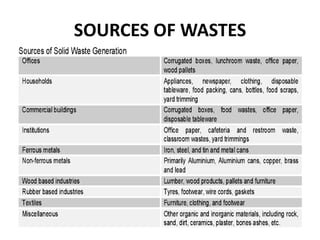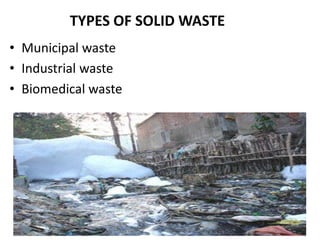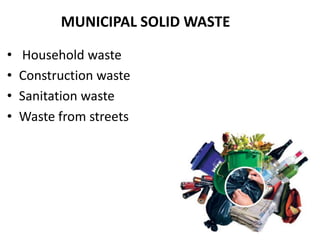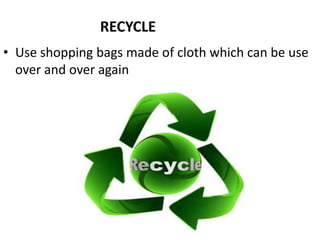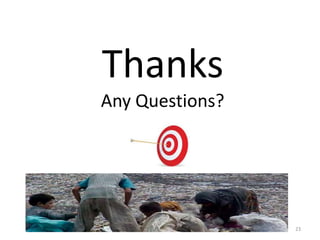Waste management (EoH) ebadullah ppt
- 1. MANAGEMENT OF SOLID WASTE FROM MUNICIPALITY By Dr. Ebadullah Hedayat 30/ 01/ 2012
- 2. OUTLINE OF THE PRESENTATION • Define solid waste • Different sources of solid waste • Municipality waste • Impact of solid waste on health • Waste management • Recommendations • Conclusion • References
- 3. INTRODUCTION Waste • Unwanted or useless material. • Also called as rubbish, trash refuse, garbage and junk.
- 4. SOURCES OF WASTES Solid waste Biomedical waste Liquid waste Biodegradable waste Gaseous waste Commercial waste Industrial waste Business waste Hospital waste Consumable waste Animal waste Composite waste Construction waste Bulky waste Chemical waste Coffee waste water
- 6. BACKGROUND • Since the beginning Human kind has been generating waste BUT • With the progress of civilization the waste became of a more complex nature
- 7. SOLID WASTE Non liquid, non soluble materials ranging from municipal garbage to industrial waste that contain complex and sometime hazardous substances
- 8. TYPES OF SOLID WASTE • Municipal waste • Industrial waste • Biomedical waste
- 9. MUNICIPAL SOLID WASTE • Household waste • Construction waste • Sanitation waste • Waste from streets
- 11. EFFECTS OF SOLID WASTE Health hazard • Create unhygienic conditions • Lead to outbreak of diseases • Spread of disease and loss of human lives • Occupational hazards
- 12. EFFECTS ……. Environmental impact • Decomposition and putrefaction • hateful odors due to decomposition
- 13. WASTE MANAGEMENT • Four Rs concept ( Reduce, Reuse, Recycle, Refuse) Refuse
- 14. REFUSE • Use containers that are already at home • Refuse to buy the new item when they are not required
- 15. REUSE • If you cannot prevent waste then reuse
- 16. RECYCLE • Use shopping bags made of cloth which can be use over and over again
- 17. REDUCE • Reduce generation of unnecessary waste
- 18. CONTROL MEASURES The main purpose of solid waste management is to minimize the adverse effects on the environment, by • Collection of solid wastes • Disposal of solid wastes • Utilization of wastes
- 19. CONTROL MEASURES… Collection of waste • Gathering the waste • Transporting to centralized location Disposal of waste • Compaction • Incineration • Manual separation
- 20. CONTROL MEASURES… Utilization of waste • Conservation of natural resources • Economic development • Generate many useful product • Employment opportunities • Control of air pollution
- 21. CONCLUSION • Limited focus on control mechanism affecting on safety, health and environment • Inadequately enforcement of regulations • Lack of integrated solid waste management system • Involvement of private sector is ignored. • open burning and disposal of waste is common practice.
- 22. RECOMMENDATIONS • The involvement of people and public sector could improve the efficiency of solid waste management • Public awareness • House to house collection of waste • Availability of collections bins with enough capacity • Storage facility to avoid unhygienic and unsanitary conditions
- 23. Thanks Any Questions? 23




